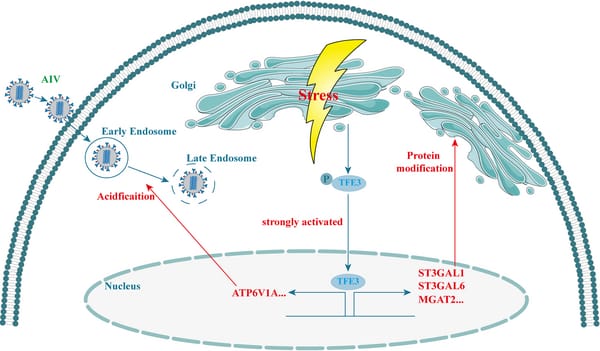By Yuncong Yin et al.
Source PLOS
Abstract
During infection, avian influenza virus (AIV) triggers endoplasmic reticulum (ER) stress, a well-established phenomenon in previous research. The Golgi apparatus, situated downstream of the ER and crucial for protein trafficking, may be impacted by AIV infection. However, it remains unclear whether this induces Golgi apparatus stress (GAS) and its implications for AIV replication. We investigated the morphological changes in the Golgi apparatus and identified GAS response pathways following infection with the H5 subtype AIV strain A/Mallard/Huadong/S/2005. The results showed that AIV infection induced significant swelling and fragmentation of the Golgi apparatus in A549 cells, indicating the presence of GAS. Among the analyzed GAS response pathways, TFE3 was significantly activated during AIV infection, while HSP47 was activated early in the infection process, and CREB3-ARF4 remained inactive. The blockade of the TFE3 pathway effectively inhibited AIV replication in A549 cells and attenuated AIV virulence in mice. Additionally, activation of the TFE3 pathway promoted endosome acidification and upregulated transcription levels of glycosylation enzymes, facilitating AIV replication. These findings highlight the crucial role of the TFE3 pathway in mediating GAS response during AIV infection, shedding light on its significance in viral replication.
Read more click here

